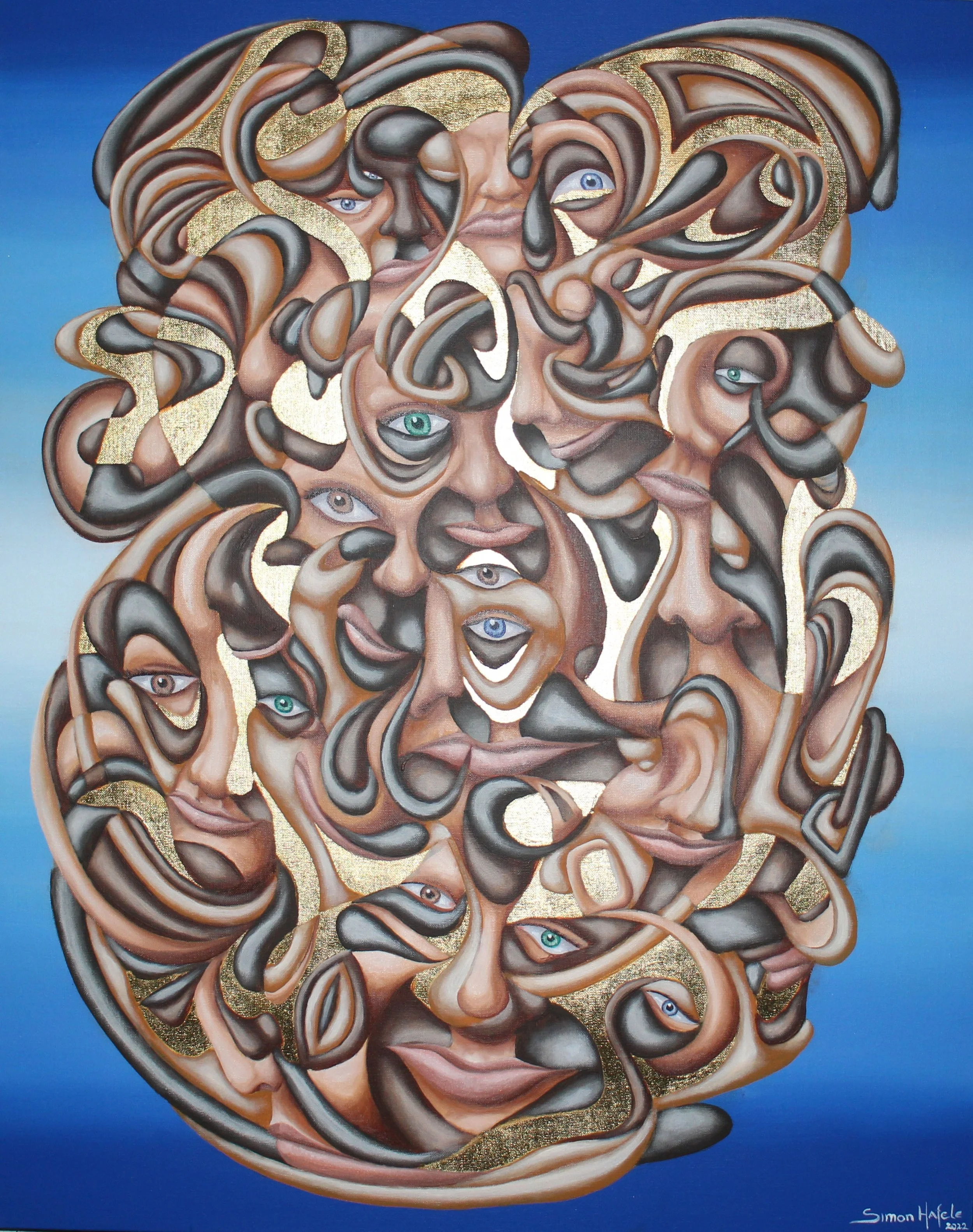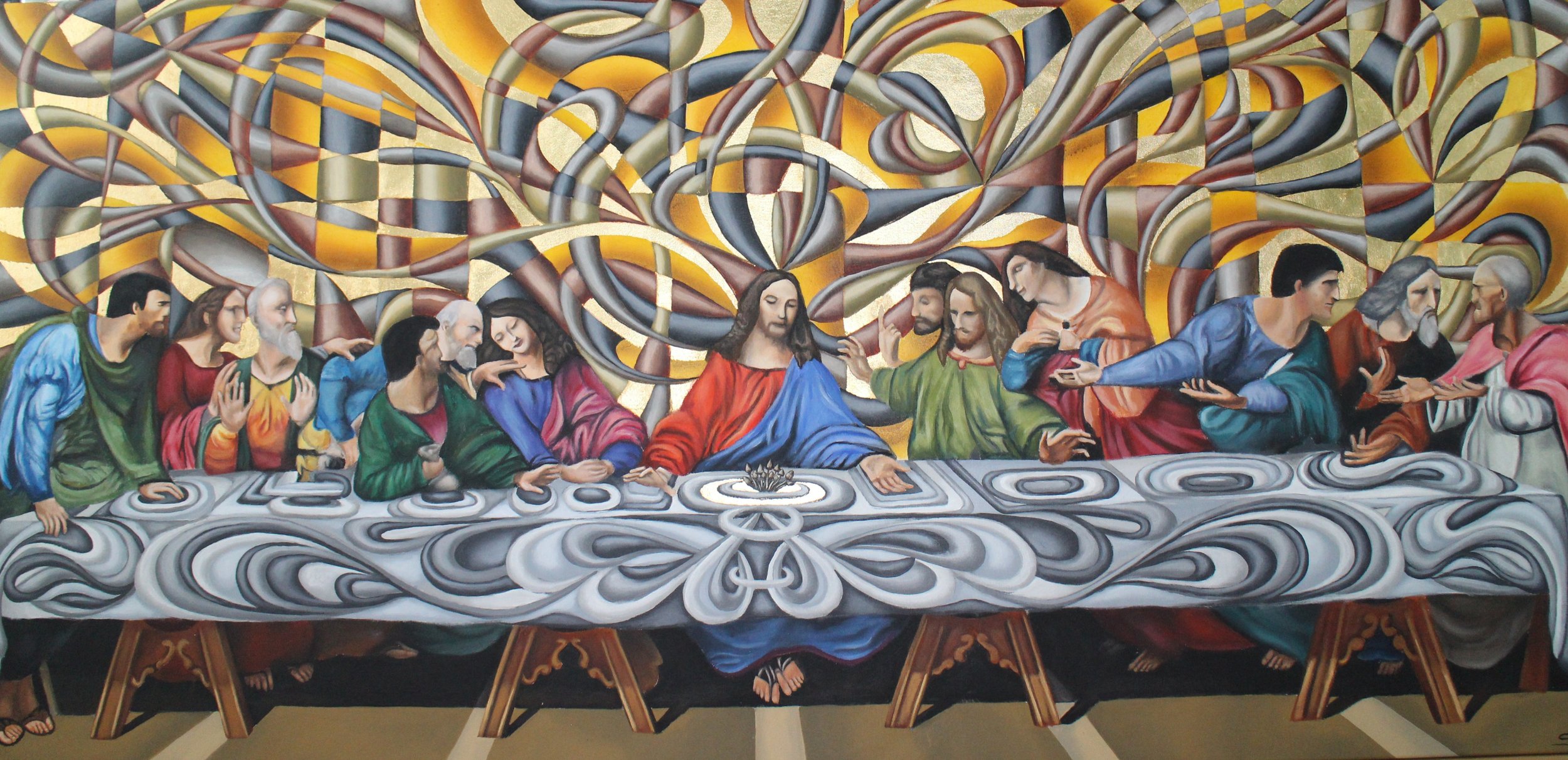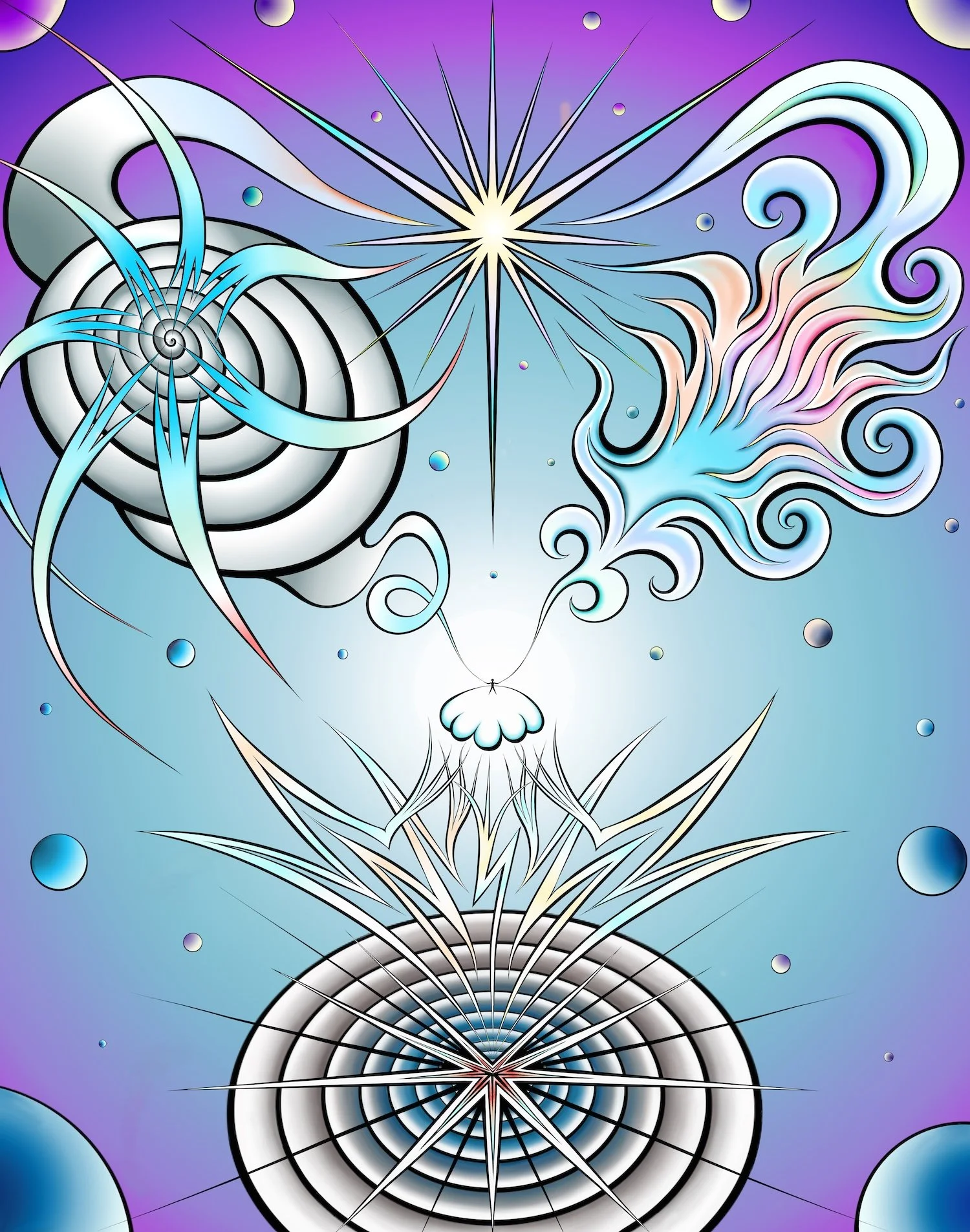Interview with Simon Hafele
Growing up in the Austrian Alps and in the community of Ladis, how did your surroundings influence your initial interest in art and your early works?
Growing up amidst the breathtaking landscapes of the Austrian Alps, particularly in the idyllic village of Ladis, has profoundly influenced my artistic journey. The tranquility and peace inherent in a Tyrolean mountain village have instilled in me a sense of inner peace—a crucial element for any creative endeavor. Life in Ladis, where the most significant transgressions involve minor farmer disputes, has cultivated a unique and original Tyrolean mentality, deeply rooted in the rugged mountainous terrain. My childhood was marked by carefree days, untouched by the digital age, where simple pleasures like playing cops and robbers allowed for an exploration of imagination. From an early age, I displayed a natural affinity for artistic expression, particularly with colored pencils. This inclination may well be a hereditary trait, traced back to Melchior Hefele, the last known creative individual in my family tree, dating back to 1716.
Can you describe your experience at Elbigenalp carving school and how it helped shape your artistic style and direction?
My time at the Elbigenalp carving school was an enriching chapter that significantly contributed to shaping my artistic style. Amidst the carefree atmosphere, creativity took precedence, with an emphasis on hands-on artistic techniques over theoretical concepts. Notably, my mentor, Schnegg Luggi, a teacher at Elbigenalp, played a pivotal role in fostering my artistic ambitions. His unwavering support and guidance empowered me to embark on a self-employed artistic journey. Schnegg Luggi not only influenced my artistic perspective but also played a crucial role in my decision to embrace a career in art. His support extended beyond the realms of education, providing me with my first studio and aiding me during a challenging period in my early career. The profound impact of his mentorship continues to resonate with me, and I attribute a significant portion of my artistic resilience to his influence.
During your travels in countries like India, Cambodia, and Thailand, how did the local art and culture influence your work, particularly your use of colors and themes
The motivation behind my extensive travels to countries like India, Cambodia, and Thailand was deeply rooted in a desire for a spiritual quest. Exploring mysticism, spirituality, and the search for self-identity became the thematic core of my artistic narrative. The journey to India, in particular, marked a transformative experience, providing a template for my paintings and expanding the horizons of my creative expression. Beyond the physical and cultural landscapes encountered during these travels, the freedom inherent in the act of traveling itself provided my mind with an expansive canvas for creativity. This freedom, a departure from the structured routine of everyday life, continues to be a wellspring of inspiration.
You mention experimenting with various colors and light to develop a unique style. How would you describe the evolution of your style over the years?
Reflecting on the evolution of my artistic style, the trajectory of my work can be traced back to the initial inklings seen in the graduation poster I designed for the Elbigenalp carving school. The naivety of my 18-year-old self manifested in those early creations. Subsequent journeys to India acted as a catalyst, lifting the fog and providing clarity to my artistic vision. Over the years, my perspective has matured, resulting in refined brushstrokes and a clearer view of my artistic intent. While adhering to my fundamental approach in art, I have delved deeper into areas of interest, such as sacred geometry, Fibonacci sequences, and the philosophical and mythological underpinnings of symbols. These elements seamlessly integrate into my art, reinforcing my thematic focus on love, mysticism, and the supernatural—embodied by the motto "die to live."
Your work in decorating music festivals and creating ceiling designs for Psytrance events seems to be a significant part of your journey. How do you see the relationship between your art and music?
My involvement in decorating music festivals, particularly within the Psytrance scene, has been a significant chapter in my life. The relationship between art and music in my world is deeply symbiotic. The harmonious nature of music enhances the beauty of my artistic vision. My affinity for Psytrance has not only enriched my artistic journey but has also shaped the colorful tapestry of my life. While the industry has undergone significant changes with the advent of digital technologies, I still find joy in occasional event decoration, especially for friends in the industry. Having celebrated numerous festivals worldwide over my 18-year career, I've forged enduring friendships with event organizers, with whom I continue to collaborate. However, I also recognize the evolving landscape and acknowledge my own desire to take a more relaxed approach in my creative endeavors.
Your approach to 'Visionary Psychedelic Art' is quite unique. Can you elaborate on the philosophy behind this and how you 'reveal your soul' through your art?
The philosophy behind 'Visionary Psychedelic Art' has undergone profound shifts, paralleling the evolution of my artistic style. Initially, my creations were an expression of the most beautiful imagery my mind could conjure, with the power of thoughts playing a central role. Choosing love as my guiding force, my art has become a manifestation of my soul. This philosophy stems from a belief in the universal origin and unconditional nature of love, offering viewers a canvas for diverse interpretations. The vision is an expression of my soul, a reflection of my conscious decision to embrace love as a guiding principle. This concept transcends societal norms and identities, encouraging viewers to explore their interpretations and connect with the universal elements encapsulated in my art.
In your view, what role does the spectator play in interpreting and experiencing your artwork, especially given its vivid and complex nature?
From my viewpoint, the viewer stands at the heart of the artistic experience, assuming a central and dynamic role in engaging with my creations. I intentionally steer clear of prescribing specific meanings, opting instead for an open canvas where each observer can weave their own narrative. Love, as a pervasive and powerful theme in my works, serves as a universal language, providing a foundation for diverse interpretations. The canvas is not just an aesthetic composition; it's an invitation for viewers to delve into a profound emotional journey. The colorful and harmonious nature of love defines the very essence of my artistic world, and my hope is that viewers not only appreciate its visual beauty but also immerse themselves in the rich emotional tapestry it seeks to evoke. It's more than an observation; it's an invitation for the audience to actively participate in a deeply personal and meaningful connection with the art.
You've mentioned facing difficulties that led to transformative opportunities in your career. Could you share more about these challenges and how they impacted your artistic growth?
Navigating the challenges posed by the global COVID-19 pandemic was a shared struggle with the world. The pandemic brought about a seismic shift in my career, transitioning from predominantly working in the event industry to dedicating myself fully to traditional art. This transformative period, albeit mentally taxing, marked a rebirth—akin to the phoenix rising from the ashes. The pandemic served as a catalyst for profound change and transformation. This mental journey became an integral part of my artistic identity, prompting a shift from my stage name Psy-Pix to the artist Simon Hafele. Depression, often considered a formidable adversary, became a constructive force for change. Embracing the inherent duality of existence, where light cannot exist without darkness, I learned to perceive depression as a catalyst for constructive growth. This constructive process, amidst the pain and challenges, became an essential aspect of my journey as an artist.
Looking forward, what are your main artistic goals, and are there any upcoming projects that you are particularly excited about?
Looking ahead, my artistic goals encompass providing ample space for creativity to flourish, akin to the expansive canvas of my vision. Recently certified by the Museum of Americas, I am particularly excited about upcoming projects. An exhibition in Dubai, organized by the Museum of Americas in March, holds promise for new artistic horizons. In my home country, a larger solo exhibition is scheduled for the Long Night of the Museums in Reutte in October. As an artist committed to lifelong learning, I remain open to new techniques and ideas, with a keen enthusiasm for the diverse projects that life unfolds. The art world, with its inherent dynamism, continues to present opportunities for growth, and I trust that life will provide precisely what I need—a sentiment that fills me with profound gratitude.
Finally, how do you see the role of art in society, especially in terms of engaging with complex themes like truth and existence, without necessarily delving into politically motivated narratives?
I believe that art serves as a mirror reflecting the essence of the contemporary society it originates from. From the ancient cave paintings of Lascaux to the present-day art scene, various artistic expressions offer insights into the prevailing ideologies and aesthetic values of their respective eras. Society may not overtly define itself through art during its existence; often, art gains significance and relevance as history unfolds. My artistic goal is to aptly capture and convey the spirit of our current times through meticulous quality and execution. I leave the interpretation and contextualization of my work to the domain of art history. In my worldview, truth and existence are detached from political influences. Instead, they face threats and even destruction from politics and, more alarmingly, politically motivated religion. Consequently, I strive to ensure that my art remains a sanctuary free from the encroachment of political ideologies. Frankly, the mere thought of politics tends to unsettle me.While I stay well-informed, I carefully select the extent to which certain ideologies, particularly the pervasive propaganda in today's society, find expression in my art. I intend for my artistic creations to stand as a counterpoint to these elements, providing an alternative perspective and resisting the infiltration of politics into my creative space.

















